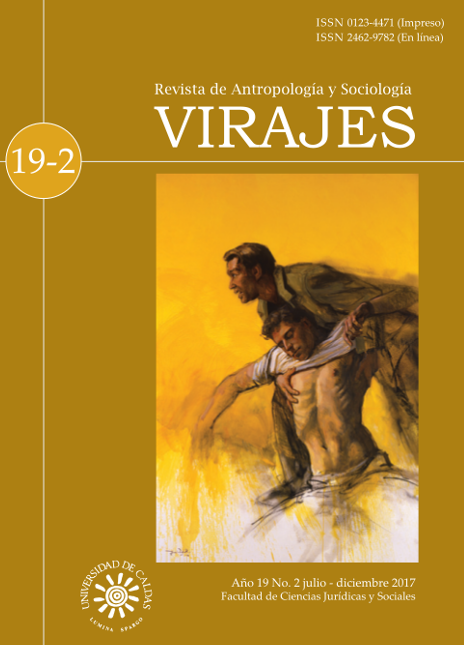Authors
Abstract
Objective: The purpose of this article is to show how children from the Mosoco indigenous shelter construct scenarios that promote good living for their families and community through the acquisition of collective learning, reflections and experiences of the context they inhabit. Methodology: This is carried out through field experience during the formulation of the Public Policy on Childhood and Youth of the Municipality of Páez, as well as through the recognition of scenarios constructed by the participants during the educational proposal for social agency. (EPSA). Results: In this sense, there is an initial approach to some moments of the socialization and construction processes of the individual, starting with sections that highlight the family, the school, and the community among others that are part of the process of building individual and collective identities and of young people. With the above, points of reading to understand the new practices of identity in the processes of socialization and subjectivation of the new generations are found, but also of the community dynamics that are woven around the current political, economic and cultural processes. Conclusions: Finally, it is necessary to reflect on the role of indigenous communities, considering the seeds of life as agents and social actors, seeking to recover their views in the maze of cultural relations, as they are the basis of a good education and the generation of conditions for creativity, recreation and relationship with mother nature, the social environment, and in general, a good living for all from a diverse context.
References
Alcaldía municipal Páez-Cauca (2016-2019). Política publica para la infancia, la niñez y la adolescencia del municipio de Páez, Belalcázar, Colombia.
Berger, Peter L. y Luckmann, Thomas (1995). La construcción social de la realidad. Buenos Aires. Amorrortu editores. Obra original publicada en 1967.
Boaventura, S. (2010) Descolonizar el Saber, reinventar el poder. Universidad la república, Montevideo, Uruguay.
Cabildo Indígena de Mosoco. (2006). Plan de vida en defensa, permanencia y autonomía del territorio nasa mosoqueño. Mosoco, Colombia: Institución educativa Juan Tama.
Cabildo Indígena de Mosoco. (2015). Plan de vida en defensa, permanencia y autonomía del territorio nasa mosoqueño. Mosoco, Colombia: Institución educativa Juan Tama.
Contreras, M. (2001) socialización y escuela Centro Universitario de Estudios Superiores Sagrada Familia – Úbeda
Guegia, C. (2010) Proceso Educativo de la escuela de Escalereta. Universidad del Cauca, Popayán, Colombia.
Guegia-Hurtado, J.P. (2017). Al paso de las semillas de vida del pueblo nasa de Tierradentro y la construcción de las nuevas identidades. Revista de Antropología y Sociología: VIRAJES, 19 (2), 07 de junio-2017.
Hernández, E. (2006). La resistencia civil de los indígenas del cauca. Scientific Electronic Library Online ,11 (1), 66-79.
Juárez, A. (2006). Autobiografía, identidad y ropa en el siglo de oro. A, Rowe (Ed), El cuerpo vestido y la construcción de la identidad en las narrativas autobiográficas del siglo de oro (pp.12-30). Tamesis, Woodbridge.
Lockwood-David. (1964). El paradigma de sistemas: posibilidades para una práctica social emancipadora. Revista Filosofía Universitaria Costa Rica, XXVII (66), 387-398.
Luckmann-Thomas y Berger Peter (2003) La construcción social de la realidad. Amorrortu editores S. A., Paraguay 1225, 7” piso (1057) Buenos Aires.
Riesman, D. (1950) La muchedumbre solitaria un estudio sobre el carácter norteamericano. Buenos aires, Argentina.
Rocher, G. (1980). Introducción a la Sociología General. Barcelona, Herder. 7ª ed.

 PDF (Español)
PDF (Español)
 FLIP
FLIP


















